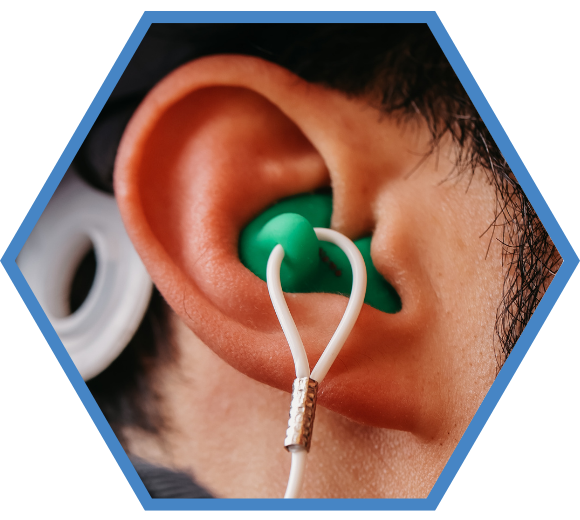WORKER TRAINING
Adopting hearing protectors
Theoretical and practical training

By Jules Pouzot | Operations Manager
The use of hearing protectors is widespread in noisy work environments. The adoption and commitment of workers to the use of this personal protective equipment plays a crucial role in the prevention of hearing loss in the workplace.
To this end, we offer training courses that adhere to the following standards and regulations:
Article 141.2 of the RROHS
In all cases where the employer is required to provide hearing protectors, he must provide workers with theoretical and practical training, which includes in particular:
- 1° the factors to be considered when choosing hearing protectors and their use in different work situations;
- 2° their adjustment;
- 3° their inspection;
- 4° maintenance;
- 5° the risks associated with noise and the importance of wearing hearing protectors throughout exposure to noise.
CSA Z94.2-14
This standard stipulates the importance of encouraging noise-exposed workers to use hearing protection correctly.
To do so, it is essential to provide them with a clear explanation of the risks and consequences of exposure to excessive noise levels on hearing health.
More specifically, the concepts of temporary and permanent hearing loss need to be explained, with emphasis on the irreversible aspect of hearing loss caused by noise exposure.
Frequently asked questions
Adopting protectors
In line with our customers' requests, we are able to offer this training following delivery of the custom-made earplugs.
In accordance with the requirements of article 141.2 of the RROHS, this training must include a practical component, which can only be provided in a classroom setting.

Reduce noise exposure with customized plugs
Reinforce your prevention program with our custom-made earplugsthat offer optimum comfort and superior protection to prevent occupational deafness.

-1.png?width=144&height=72&name=BJA%20_%20Logo%20Color%20%20(1)-1.png)
